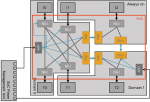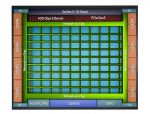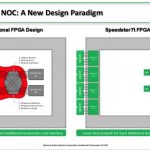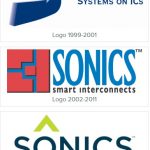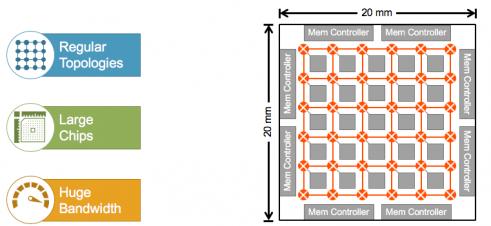The nexus of complexity in SoC design these days has to be in automotive ADAS devices. Arteris IP highlighted this in the Linley Processor Conference recently where they talked about an ADAS chip that Toshiba had built. This has multiple vision and AI accelerators, both DSP and DNN-based. It is clearly aiming for ISO 26262 ASIL D … Read More
Tag: noc
Webinar – FPGA Native Block Floating Point for Optimizing AI/ML Workloads
Block floating point (BFP) has been around for a while but is just now starting to be seen as a very useful technique for performing machine learning operations. It’s worth pointing out up front that bfloat is not the same thing. BFP combines the efficiency of fixed point operations and also offers the dynamic range of full floating… Read More
Free webinar – Accelerating data processing with FPGA fabrics and NoCs
FPGAs have always been a great way to add performance to a system. They are capable of parallel processing and have the added bonus of reprogramability. Achronix has helped boost their utility by offering on-chip embedded FPGA fabric for integration into SoCs. This has had the effect of boosting data rates through these systems… Read More
How Should I Cache Thee? Let Me Count the Ways
Caching intent largely hasn’t changed since we started using the concept – to reduce average latency in memory accesses and to reduce average power consumption in off-chip reads and writes. The architecture started out simple enough, a small memory close to a processor, holding most-recently accessed instructions and data … Read More
An evolution in FPGAs
Why does it seem like current FPGA devices work very much like the original telephone systems with exchanges where workers connected calls using cords and plugs? Achronix thinks it is now time to jettison Switch Blocks and adopt a new approach. Their motivation is to improve the suitability of FPGAs to machine learning applications,… Read More
ML and Memories: A Complex Relationship
No, I’m not going to talk about in-memory-compute architectures. There’s interesting work being done there but here I’m going to talk here about mainstream architectures for memory support in Machine Learning (ML) designs. These are still based on conventional memory components/IP such as cache, register files, SRAM and various… Read More
Qualcomm Intel Facebook and Semiconductor IP
What does Qualcomm, Intel, and Facebook have in common? Well, for one thing they all bought network onchip communications (NoC) IP companies. As I have mentioned before, semiconductor IP is the foundation of the fabless semiconductor ecosystem and I believe this trend of acquisitions will continue. So, if you are going to start… Read More
Why High-End ML Hardware Goes Custom
In a hand-waving way it’s easy to answer why any hardware goes custom (ASIC): faster, lower power, more opportunity for differentiation, sometimes cost though price isn’t always a primary factor. But I wanted to do a bit better than hand-waving, especially because these ML hardware architectures can become pretty exotic, so … Read More
Disturbances in the AI Force
In the normal evolution of specialized hardware IP functions, initial implementations start in academic research or R&D in big semiconductor companies, motivating new ventures specializing in functions of that type, who then either build critical mass to make it as a chip or IP supplier (such as Mobileye – intially)… Read More
On-Chip Networks at the Bleeding Edge of ML
I wrote a while back about some of the more exotic architectures for machine learning (ML), especially for neural net (NN) training in the data center but also in some edge applications. In less hairy applications, we’re used to seeing CPU-based NNs at the low end, GPUs most commonly (and most widely known) in data centers as the workhorse… Read More


